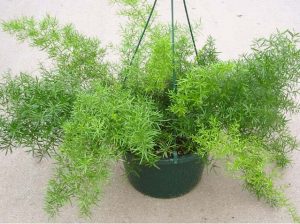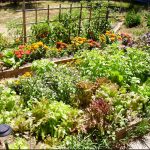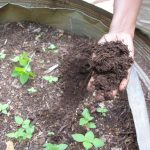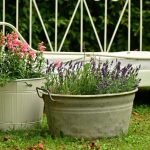How to Grow Asparagus in a Container
Table of Contents
Although you won’t be able to get the same abundant harvest if you planted in an outdoor garden area, it is possible to grow asparagus in containers if you are patient and attentive to your plants. Asparagus needs large amounts of fertile earth to produce in high quantities, but can still produce a nice modestly-sized harvest with container gardening.
Definitely it is possible, despite that Asparagus need little patience and care
Asparagus thrives in temperate climates and needs excellent drainage. For this reason, people living in tropical climates or where there is a low water table may have better results with raising asparagus in containers because the irrigation system can be manipulated to fit the crop. Some of the other advantages to growing asparagus in containers is the elimination of weed problems.
No matter where you grow asparagus, they need about 2 full years to grow and build themselves up before you can harvest anything from them. Because growing asparagus in containers is vastly different from growing them in a garden bed, here are the most important tips and tricks to be successful.
1. Begin with Crowns
Because your goal is to maximize the space that you have to grow your asparagus, it’s important that you get the best head start that you can by planting crowns which are already 1-year old. These can be purchased from most seed catalogs and plant nurseries as bare-rooted, dormant starts. This will save you an entire year of waiting. You should also make sure you choose one of the high-yield varieties like the Jersey Knight and the Jersey Supreme. Because these varieties are high-yield, they will give you a bigger crop even in a smaller amount of space.
2. Use the Right Container
Fully mature asparagus that are planted in the ground have root systems that go deeper than 10 feet into the earth and expand over 6 feet in diameter, so picking the right container to grow them in will make the difference between having a crop in the next couple of years and starting over again next year. Your plants will need at least 18 inches deep and be at least 1 foot wide. The deeper the container you can offer your asparagus, the more they will be able to grow and produce spears for you.
The type of container doesn’t really matter so long as it has sufficient drainage and is made of a material that is safe for growing food in. You can choose from terra cotta or glazed pots, wooden boxes, or plastic containers. One good option is a 30-gallon plastic storage bin which has had holes drilled into it. Another option is using Smart Pots. They provide lightweight cloth containers that offer an affordable way to maximize your indoor or container gardening space, and they have a variety of sizes to choose from based on your needs and preferences.
3. Planting
The spacing and timing that you use when planting will be a huge factor in determining your success at growing asparagus in a container. You should plant them in the early to mid part of spring, and allow your containers to get about 8 hours of sunlight every day. Prepare the soil by choosing a high-quality organic potting soil. Put the soil in a few handfuls at a time and make sure that it settles into place without becoming compacted. The last few inches will be where your crowns will be drawing their nutrients for the first year, so be sure to include a complete organic fertilizer at the top. Because asparagus needs a lot of nutrients, regularly fertilizing is essential for good growth.
 When it comes to spacing, it’s easy to crowd your crowns in an effort to get as much out of your asparagus crop as possible, but you will be sorely disappointed in your crop if you do crowd them too closely together. Although you are able to put them slightly closer together than is recommended with garden bed crops, you will still need to give them plenty of space so that their root system can prosper. For best results, place the centers of the asparagus crowns at least 6 inches away from other crowns and the sides of the container. You should also make sure to plant them so that the roots are spread out in a sunburst shape.
When it comes to spacing, it’s easy to crowd your crowns in an effort to get as much out of your asparagus crop as possible, but you will be sorely disappointed in your crop if you do crowd them too closely together. Although you are able to put them slightly closer together than is recommended with garden bed crops, you will still need to give them plenty of space so that their root system can prosper. For best results, place the centers of the asparagus crowns at least 6 inches away from other crowns and the sides of the container. You should also make sure to plant them so that the roots are spread out in a sunburst shape.
Cover the crowns with 3 inches of soil, gently patting it to level the surface. Water the containers thoroughly and make sure the soil stays moist without being wet. When the shoots reach 3 to 4 inches, add 3 more inches of soil, but be careful not to overfill your container so that water spills out during waterings.
4. Providing Support
Though we grow it for its tender spring shoots, we must let some of those shoots stretch into mature plants so they can gather the energy needed for next spring’s flush. Asparagus tops, called ferns, are tall and ungainly like a floppy pine forest or feathery patch of bamboo. Let their 4- to 6-foot height work to your advantage by using the plants as an ornamental screen or backdrop. In most cases, especially in small spaces, you will need to provide support to keep them from slumping over—encircle them with string held up by bamboo poles, or purchase welded metal supports.
5. Maintenance
Be sure to adequately water your pots. Uneven moisture availability weakens plants, especially in their first two years. Container soil tends to dry up more quickly than garden soil, so in a hot spell, you may need to water every day. Check to see if the soil is too dry by inserting your finger a couple inches below the surface—eyeballing isn’t always a sufficient indicator.
For the first two years (the year you plant plus the next one), your containers will only grow whimsical ferns. In subsequent years, after the harvest period is over, allow each crown to keep six or eight ferns through the summer. Once the ferns have been killed by frost, cut them down and use them as protective mulch over the soil. Remove them completely once the plants come to life the following spring.
Each spring after you remove the winter mulch, scratch a side-dressing of complete organic fertilizer (in the quantity instructed on the product’s label) into the top 2 inches of the soil, removing any weeds that may be popping up. If the soil has settled, top it off with a layer of compost up to 1/2 inch from the lip of the pot.
The first harvest year, pick all asparagus spears once they reach 6 to 8 inches for two to three weeks, before allowing them to grow into ferns. In subsequent years, you can harvest spears for six to eight weeks. When harvesting, be sure to remove everything, even the spindly shoots or those too damaged to eat, as this will keep the plants productive.


















